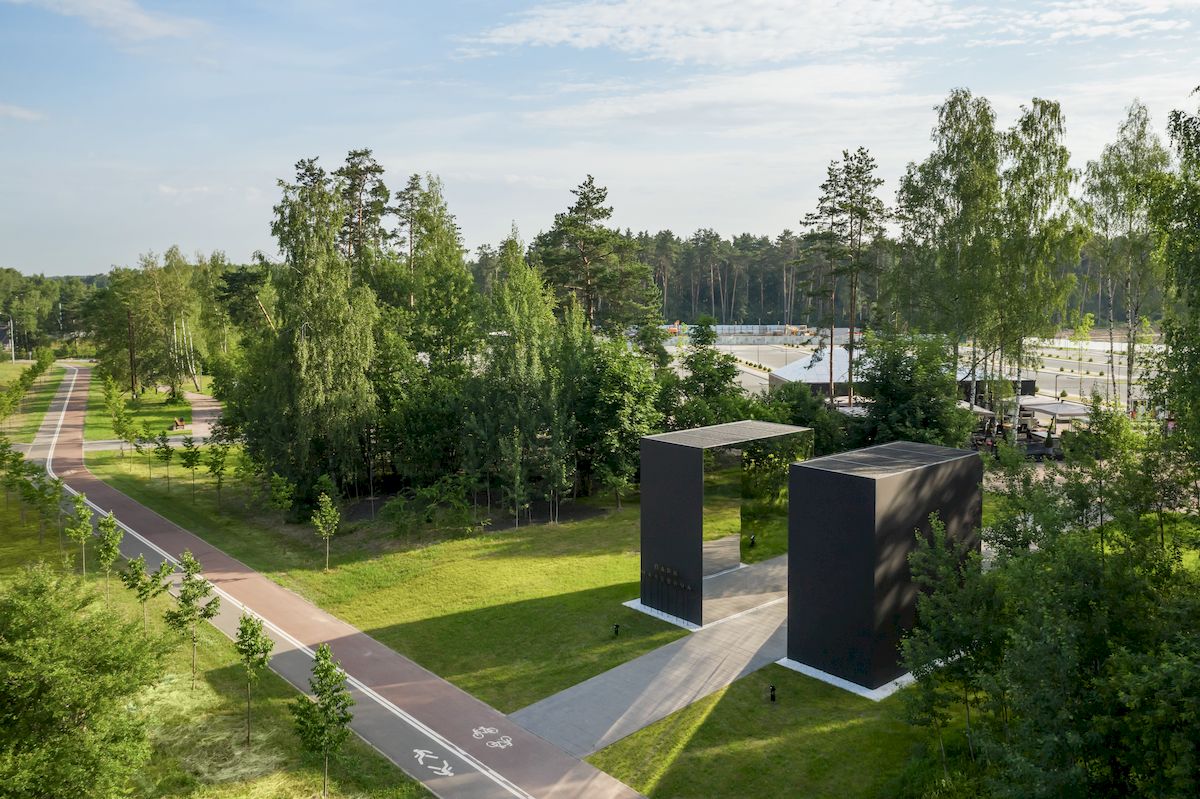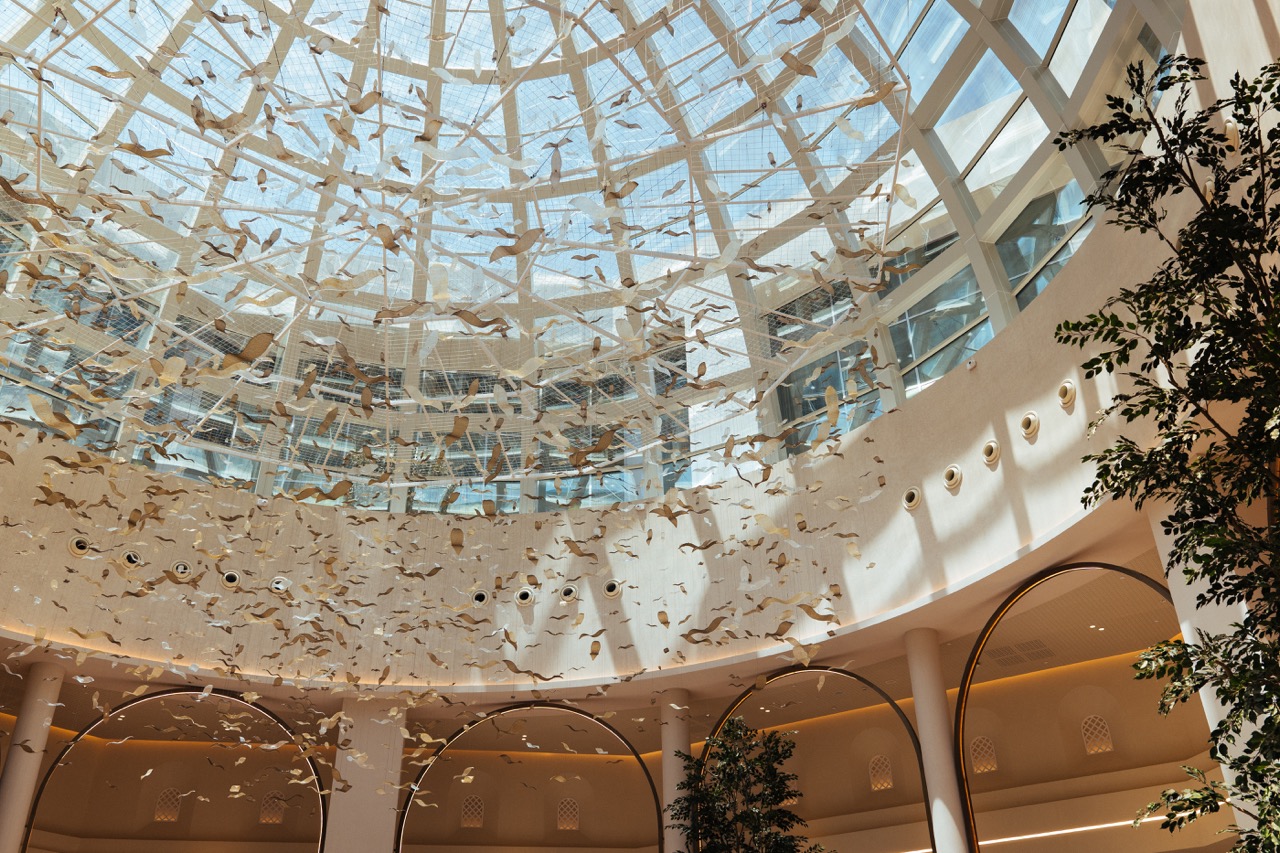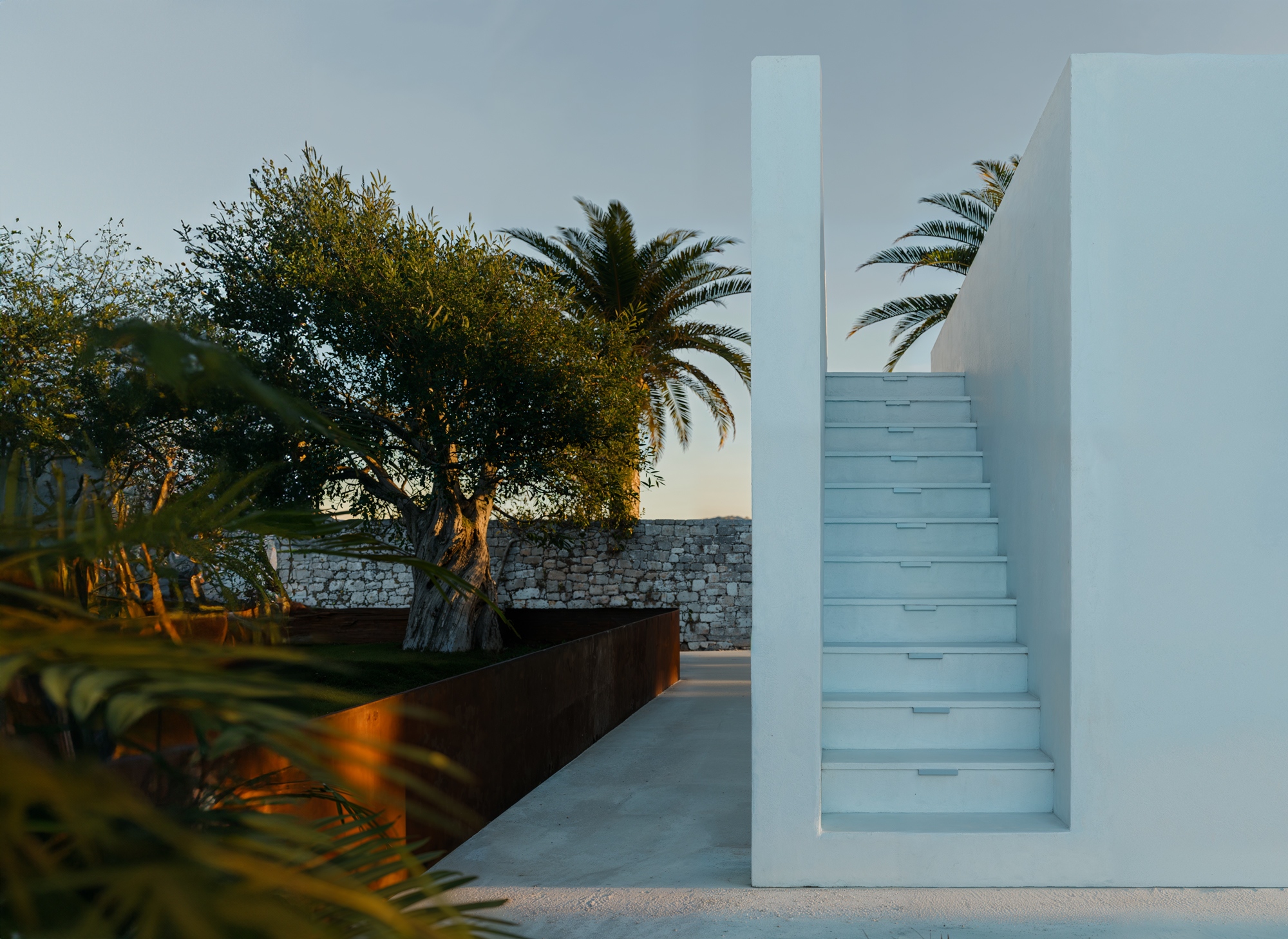Header: KULTURA SVETA
Malevich Park is a modern park area in Moscow, Russia, that combines outdoor recreation, art, and sport. To get there, you must walk through the volumetric version of “Black Square” and find yourself in an endless corridor of reflections, symbolising the incredible depth of the famous artist’s work.


Doing the most with the least
The park includes many zones and objects: walking alleys, sports grounds, bicycle paths, and art pieces. The zones in the park are distributed in such a way as to maximise the preservation of green areas and the existing landscape.
The lighting design studio KULTURA SVETA was responsible for putting the spotlight on the many attractions of Malevich Park. The objective was to use as little as possible while doing the most with the light fixtures. In the end, the team managed to only use 59 fittings, of which 22 were floor lamps and 37 were bollards.
The challenge
The main idea of the Malevich Park lighting project is to work with light as a natural extension of the landscape. The team managed to solve three main tasks in this project:
- To create a comfortable lighting atmosphere by carefully integrating the luminaires into the landscape and excluding the glow from the upper hemisphere from the light fixtures.
- To create standardised functional lighting on the paths and alleys of the park while maintaining the general principle of lighting.
- Avoid or minimise the use of tall poles.
As a result, the park has a lighting hierarchy of paths that emphasises the zoning in the landscaping concept. The paths are divided into three types, each with its own lighting, where the lighting designers applied a concise design of lights that merges with nature.


Three areas, three designs
The main circular route, which encircles the entire park, is illuminated by floor lamps on 3.5-metre-high poles. They are sparsely spaced at a distance of about 20 metres, and the illumination of this area is about 10 lux. Thus, the area has a well-lit perimeter, while the lighting inside the park is about 6–8 lux.
Low decorative bollards with a height of 70 cm are used on the inner routes, and very low bollards on the connecting slopes. Since the low-height lights do not obstruct the view, the park has good visibility both in the daytime and in the evening. Thanks to their light distribution, the bollards softly illuminate the landscape elements around the paths, such as stones and plants.
The team decided not to illuminate any trees, having left minimal lighting on the piers and the pond. In KULTURA SVETA’s opinion, fixtures should not interfere with enjoying the night sky and the beauty of the landscape, so the team tried its best to seamlessly add only the necessary.
The dimensions of the piers are marked with low-wattage spotlights built into the decking, and, as accent decorative lighting, the team slightly illuminated the water bodies. Underwater luminaires are grouped into several pieces, however, these are not arranged in a clear structure in order to create an image of natural water pulses.
This thoughtful, 100% curated design was meant to show that lighting can be sensitive to nature and comfortable for humans. The end result provides a cosy and secluded atmosphere in the evening while also ensuring a sense of security for the park’s visitors. The team managed to get away from the feeling of an urban public garden or a conventional park while maintaining the spirit of a landscape park as intended by the architects.
The multi-level lighting emphasises the different zones of the park, simply highlighting the beauty of the surrounding nature without imposing or showing off anything.












